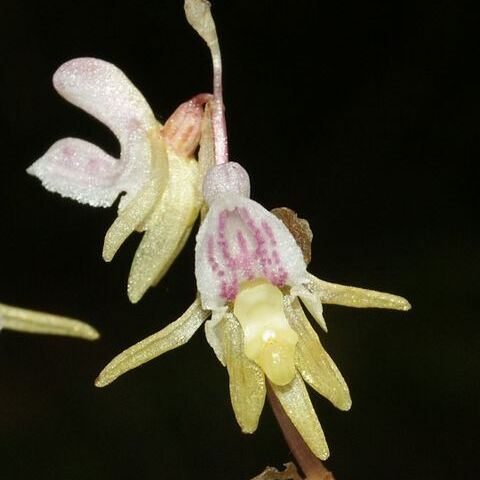Leafless and rootless (root hairs only) terrestrial orchids with a swollen, fleshy, horizontal rhizome. Inflorescence racemose, multiflowered, tip of raceme nodding in early stages of development. Flower stem pale, fleshy, brittle, hollow. Peduncle longer than rachis. Flowers non-resupinate, pendulous, smallish, white and ghostly, short-lasting (hours). Ovaries plump, swelling rapidly as flowering progresses. Sepals and petals free, narrow, similar in size and shape. Labellum moderately broad, column-embracing, flexibly attached to anterior base of column. Labellum lamina obscurely lobed, with very prominent basal spur. Anther containing 4, friable pollinia, with extended caudicles (no viscidium).
Leafless, achlorophyllose, saprophytic herbs with scape arising from tuberous rhizome. Scape simple, erect, with a few basal sheaths. Inflorescence terminal, lax. Flowers pedicellate. Tepals subequal, free. Lip wider than tepals, spurred, concave, with finely warted crests. Column short; anther short, broad; pollinia 2, sectile, each with a slender curved caudicle attached to a single broad viscidium; stigma prominent, broad; rostellum absent. Capsule ovoid, pendulous.

